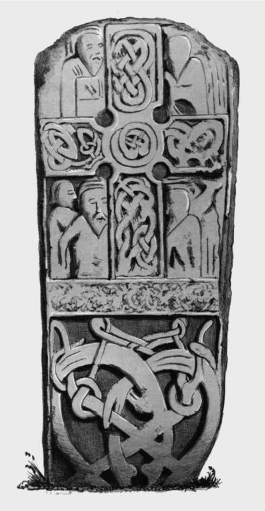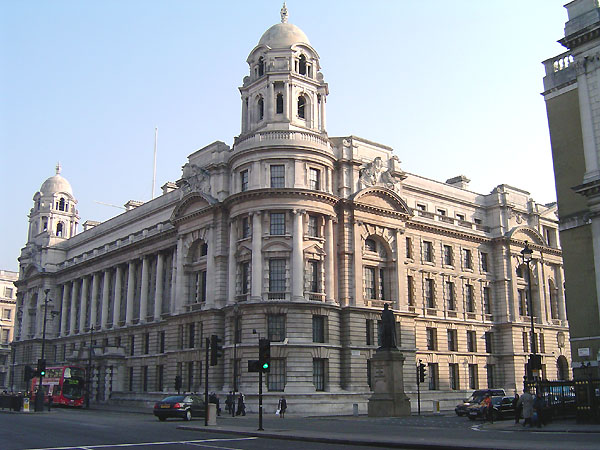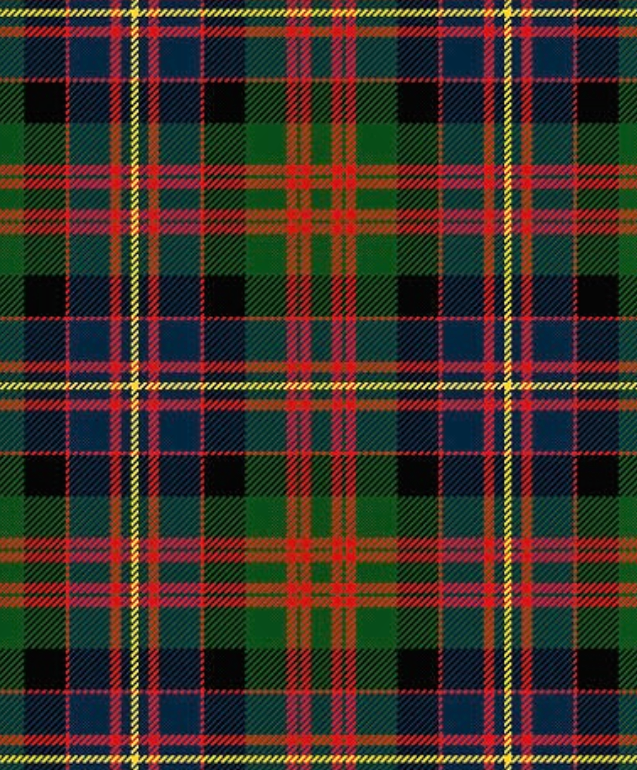|
Cooper Park Drill Hall, Elgin
The Cooper Park drill hall is a former military installation in Elgin, Scotland. History The building was designed as the headquarters of the 6th (Morayshire) Battalion, the Seaforth Highlanders and was completed in 1908. The battalion was mobilised at the drill hall in August 1914 before being deployed to the Western Front. After the Second World War, the battalion amalgamated with 5th (Caithness and Sutherland) Battalion and 7th (Morayshire) Battalion to form 11th Battalion, The Seaforth Highlanders (Ross-shire Buffs, The Duke of Albany's), with B Company of the 11th Battalion based at the Cooper Park drill hall. The 11th Battalion then amalgamated with the 4th/5th Battalion, The Queen's Own Cameron Highlanders to form the home defence battalion of the Queen's Own Highlanders (Seaforth and Camerons) in 1967. The home defence battalion of the Queen's Own Highlanders (Seaforth and Camerons) was in turn absorbed into the 51st Highland Volunteers The 51st Highland Volunte ... [...More Info...] [...Related Items...] OR: [Wikipedia] [Google] [Baidu] |
Elgin, Moray
Elgin (; sco, Ailgin; gd, Eilginn, ) is a town (former cathedral city) and formerly a Royal Burgh in Moray, Scotland. It is the administrative and commercial centre for Moray. The town originated to the south of the River Lossie on the higher ground above the floodplain where the town of Birnie is. There, the church of Birnie Kirk was built in 1140 and serves the community to this day. Elgin is first documented in the Cartulary of Moray in 1190 AD. It was created a royal burgh in the 12th century by King David I of Scotland, and by that time had a castle on top of the present-day Lady Hill to the west of the town. The origin of the name Elgin is likely to be Celtic. It may derive from 'Aille' literally signifying beauty, but in topography a beautiful place or valley. Another possibility is 'ealg', meaning both 'Ireland' and 'worthy'. The termination 'gin' or 'in' are Celtic endings signifying little or diminutive forms, hence Elgin could mean beautiful place, worthy place or l ... [...More Info...] [...Related Items...] OR: [Wikipedia] [Google] [Baidu] |
Scotland
Scotland (, ) is a country that is part of the United Kingdom. Covering the northern third of the island of Great Britain, mainland Scotland has a border with England to the southeast and is otherwise surrounded by the Atlantic Ocean to the north and west, the North Sea to the northeast and east, and the Irish Sea to the south. It also contains more than 790 islands, principally in the archipelagos of the Hebrides and the Northern Isles. Most of the population, including the capital Edinburgh, is concentrated in the Central Belt—the plain between the Scottish Highlands and the Southern Uplands—in the Scottish Lowlands. Scotland is divided into 32 administrative subdivisions or local authorities, known as council areas. Glasgow City is the largest council area in terms of population, with Highland being the largest in terms of area. Limited self-governing power, covering matters such as education, social services and roads and transportation, is devolved from the ... [...More Info...] [...Related Items...] OR: [Wikipedia] [Google] [Baidu] |
War Office
The War Office was a department of the British Government responsible for the administration of the British Army between 1857 and 1964, when its functions were transferred to the new Ministry of Defence (United Kingdom), Ministry of Defence (MoD). This article contains text from this source, which is available under th Open Government Licence v3.0 © Crown copyright It was equivalent to the Admiralty (United Kingdom), Admiralty, responsible for the Royal Navy (RN), and (much later) the Air Ministry, which oversaw the Royal Air Force (RAF). The name 'War Office' is also given to the former home of the department, located at the junction of Horse Guards Avenue and Whitehall in central London. The landmark building was sold on 1 March 2016 by HM Government for more than British pound, £350 million, on a 250 year lease for conversion into a luxury hotel and residential apartments. Prior to 1855, 'War Office' signified the office of the Secretary at War. In the 17th an ... [...More Info...] [...Related Items...] OR: [Wikipedia] [Google] [Baidu] |
Seaforth Highlanders
The Seaforth Highlanders (Ross-shire Buffs, The Duke of Albany's) was a line infantry regiment of the British Army, mainly associated with large areas of the northern Highlands of Scotland. The regiment existed from 1881 to 1961, and saw service in World War I and World War II, along with many smaller conflicts. In 1961 the regiment was amalgamated with the Queen's Own Cameron Highlanders to form the Queen's Own Highlanders (Seaforth and Camerons), which merged, in 1994, with the Gordon Highlanders to form the Highlanders (Seaforth, Gordons and Camerons). This later joined the Royal Scots Borderers, the Black Watch, the Royal Highland Fusiliers and the Argyll and Sutherland Highlanders to create the present Royal Regiment of Scotland. History Formation The regiment was created in 1881 through the amalgamation of the 72nd (Duke of Albany's Own Highlanders) Regiment of Foot and the 78th (Highlanders) (Ross-shire Buffs) Regiment of Foot – which became the 1st and 2nd ... [...More Info...] [...Related Items...] OR: [Wikipedia] [Google] [Baidu] |
Western Front (World War I)
The Western Front was one of the main theatres of war during the First World War. Following the outbreak of war in August 1914, the German Army opened the Western Front by invading Luxembourg and Belgium, then gaining military control of important industrial regions in France. The German advance was halted with the Battle of the Marne. Following the Race to the Sea, both sides dug in along a meandering line of fortified trenches, stretching from the North Sea to the Swiss frontier with France, which changed little except during early 1917 and in 1918. Between 1915 and 1917 there were several offensives along this front. The attacks employed massive artillery bombardments and massed infantry advances. Entrenchments, machine gun emplacements, barbed wire and artillery repeatedly inflicted severe casualties during attacks and counter-attacks and no significant advances were made. Among the most costly of these offensives were the Battle of Verdun, in 1916, with a combined 700 ... [...More Info...] [...Related Items...] OR: [Wikipedia] [Google] [Baidu] |
World War II
World War II or the Second World War, often abbreviated as WWII or WW2, was a world war that lasted from 1939 to 1945. It involved the World War II by country, vast majority of the world's countries—including all of the great powers—forming two opposing military alliances: the Allies of World War II, Allies and the Axis powers. World War II was a total war that directly involved more than 100 million Military personnel, personnel from more than 30 countries. The major participants in the war threw their entire economic, industrial, and scientific capabilities behind the war effort, blurring the distinction between civilian and military resources. Air warfare of World War II, Aircraft played a major role in the conflict, enabling the strategic bombing of population centres and deploying the Atomic bombings of Hiroshima and Nagasaki, only two nuclear weapons ever used in war. World War II was by far the List of wars by death toll, deadliest conflict in hu ... [...More Info...] [...Related Items...] OR: [Wikipedia] [Google] [Baidu] |
Queen's Own Cameron Highlanders
The Queen's Own Cameron Highlanders or 79th (The Queen's Own Cameron Highlanders) Regiment of Foot was a line infantry regiment of the British Army, raised in 1793. It amalgamated with the Seaforth Highlanders (Ross-shire Buffs, The Duke of Albany's) to form the Queen's Own Highlanders in 1961. History The regiment was raised as the 79th Regiment of Foot (Cameronian Volunteers) on 17 August 1793 at Fort William from among the members of the Clan Cameron by Sir Alan Cameron of Erracht.Jameson, p. 2 Wars with France 1793 – 1815 The regiment was deployed briefly to Ireland and southern England, then to Flanders in 1794 where it took part in an unsuccessful campaign under the command of the Duke of York during the French Revolutionary Wars.Jameson, p. 3 On its return to England the 79th Foot was listed for disbandment, with the men being drafted into other units. In the end the regiment was reprieved, being instead posted to the West Indies in 1795; after a two-year tour ... [...More Info...] [...Related Items...] OR: [Wikipedia] [Google] [Baidu] |
Queen's Own Highlanders (Seaforth And Camerons)
The Queen's Own Highlanders (Seaforth and Camerons), officially abbreviated "QO HLDRS," was an infantry regiment of the British Army, part of the Scottish Division. It was in existence from 1961 to 1994. History 1961–1970 The regiment was formed on 7 February 1961 at Redford Barracks, Edinburgh, with the amalgamation of 1st Battalion, Seaforth Highlanders and 1st Battalion, Queen's Own Cameron Highlanders to form the 1st Battalion, Queen's Own Highlanders. This was a part of the defence reforms originally announced in the 1957 Defence White Paper, which saw a reduction in the size of the British Army to reflect the end of National Service. The battalion was sent to Singapore in April 1961 from where it was deployed to Brunei in December 1962 in order to help suppress the Brunei Revolt at an early stage of the Indonesia–Malaysia confrontation. This included a successful air assault on the rebel–held Shell oilfields at Seria, with the airfield quickly recaptured and 48 ho ... [...More Info...] [...Related Items...] OR: [Wikipedia] [Google] [Baidu] |
51st Highland Volunteers
The 51st Highland Volunteers (51 HIGHLAND) is a battalion in the British Army's Army Reserve or reserve force in the Scottish Highlands, forming the 7th Battalion of the Royal Regiment of Scotland, also known as 7 SCOTS. It is one of two Reserve battalions in the Royal Regiment of Scotland, along with 52nd Lowland (6 SCOTS), a similar unit located in the Scottish Lowlands. Originally formed as the 51st Highland Volunteers in 1967, as a result of the amalgamation of Territorial Battalions within the infantry Regiments of the Highland Brigade, the name commemorated the 51st (Highland) Division of the Territorial Force, within which many of the Regiment's antecedent Territorial Battalions served during the First and Second World Wars. History Origins and First World War The current Battalion traces its lineage back to the reserve Rifle Volunteer units that were originally raised in the Scottish Highlands as part of the Victorian Volunteer Force by Lord Lieutenants in eve ... [...More Info...] [...Related Items...] OR: [Wikipedia] [Google] [Baidu] |
Highlanders (Seaforth, Gordons And Camerons)
The Highlanders, 4th Battalion, Royal Regiment of Scotland (4 SCOTS) is an infantry battalion of the Royal Regiment of Scotland. Prior to 28 March 2006, the Highlanders was an infantry regiment in its own right; The Highlanders (Seaforth, Gordons and Camerons), part of the Scottish Division. The regiment was one of only two in the British Army with a Gaelic motto – ''Cuidich 'n Righ'' which means "Help the King". The other is the Royal Irish Regiment, whose motto is ''Faugh a Ballagh'' (an anglicised version of the Gaelic ''Fág an Bealach!'' - Clear the Way!) History The regiment was formed on 17 September 1994 as part of the Options for Change defence review, by the amalgamation of the Queen's Own Highlanders (Seaforth and Camerons) and the Gordon Highlanders. The new regiment undertook a two-year tour of Northern Ireland from April 1995, and were stationed at Ebrington Barracks in County Londonderry. After being based in various locations around the United Kingdom, th ... [...More Info...] [...Related Items...] OR: [Wikipedia] [Google] [Baidu] |
Strategic Defence Review
The Strategic Defence Review (SDR) was a British policy document produced in July 1998 by the Labour Government that had gained power a year previously. Then Secretary of State for Defence, George Robertson, set out the initial defence policy of the new government, with a series of key decisions designed to enhance the United Kingdom's armed forces. Two of the largest defence procurement projects were excluded from the 1998 SDR, the Trident submarines and the Eurofighter. However the Trident system was essential to maintaining a credible nuclear deterrent, a policy adopted by Labour, and was already nearing completion. Likewise the Eurofighter was nearing production and withdrawal would lead to loss of considerable investment and severe penalties from the partner nations. Its overall strategic conclusions were that the British Armed Forces should be able to respond to a major international crisis which might require a military effort and combat operations of a similar scale an ... [...More Info...] [...Related Items...] OR: [Wikipedia] [Google] [Baidu] |
Drill Halls In Scotland
A drill is a tool used for making round holes or driving fasteners. It is fitted with a bit, either a drill or driver chuck. Hand-operated types are dramatically decreasing in popularity and cordless battery-powered ones proliferating due to increased efficiency and ease of use. Drills are commonly used in woodworking, metalworking, construction, machine tool fabrication, construction and utility projects. Specially designed versions are made for miniature applications. History Around 35,000 BC, ''Homo sapiens'' discovered the benefits of the application of rotary tools. This would have rudimentarily consisted of a pointed rock being spun between the hands to bore a hole through another material. This led to the hand drill, a smooth stick, that was sometimes attached to flint point, and was rubbed between the palms. This was used by many ancient civilizations around the world including the Mayans. The earliest perforated artifacts, such as bone, ivory, shells, and ant ... [...More Info...] [...Related Items...] OR: [Wikipedia] [Google] [Baidu] |






